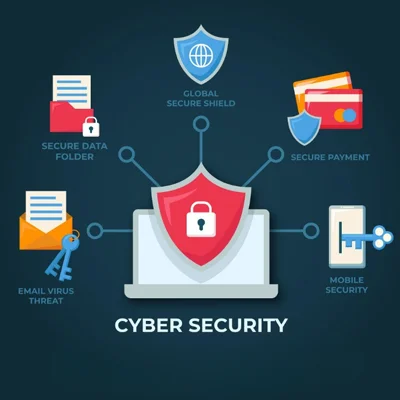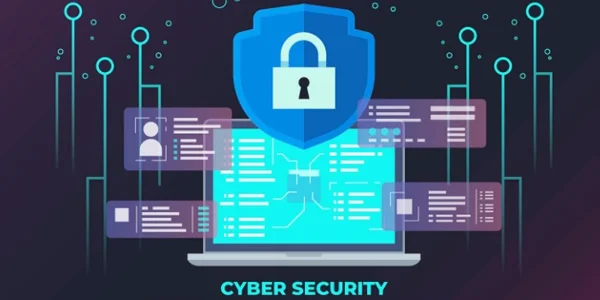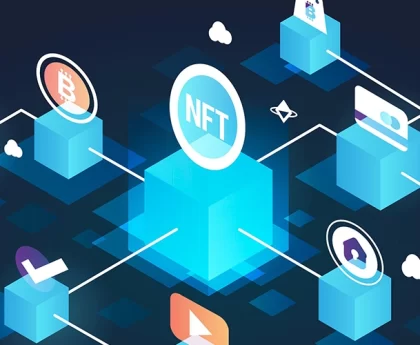Cyber Security: Maximizing Protection Within Constraints, is the practice of protecting computer systems, networks, devices, and data from unauthorized access, cyber attacks, damage, or theft. It encompasses a wide range of strategies, technologies, and processes designed to safeguard digital information and prevent it from being compromised.
The primary objectives of cybersecurity are to ensure the confidentiality, integrity, and availability of data. This involves implementing measures to defend against various cyber threats, such as malware, phishing, ransomware, social engineering, and other malicious activities that could exploit vulnerabilities in systems or networks.
Cybersecurity measures include the use of encryption, firewalls, antivirus software, intrusion detection systems, regular security audits, user education, access controls, incident response plans, and compliance with relevant regulations and best practices. The field of cybersecurity is dynamic and continuously evolving to adapt to new and emerging threats in the digital landscape.

Types of Cyber Security
Cybersecurity encompasses various types or categories that work together to protect systems, networks, data, and users from different types of threats.
Some key types of cybersecurity include:
- Network Security: Focuses on securing the integrity and confidentiality of data as it is transmitted across networks. It involves technologies like firewalls, VPNs (Virtual Private Networks), and intrusion detection/prevention systems to monitor and control network traffic.
- Endpoint Security: Protects individual devices (endpoints) such as computers, smartphones, and other connected devices from security threats. Antivirus software, anti-malware programs, and endpoint detection and response (EDR) tools are examples.
- Application Security: Involves securing software applications and programs from threats. This includes secure coding practices, regular software updates and patches, and using security measures to prevent vulnerabilities like SQL injection or cross-site scripting.
- Cloud Security: Ensures the security of data stored in cloud platforms. It involves encryption, access controls, and monitoring to protect information stored on cloud servers.
- Data Security: Focuses on protecting data from unauthorized access or alteration throughout its lifecycle. Encryption, tokenization, data masking, and access controls are used to safeguard sensitive information.
- Identity and Access Management (IAM): Manages and controls user access to systems and resources. IAM includes authentication, authorization, and identity governance to ensure that only authorized individuals can access specific resources.
- Security Operations (SecOps): Involves monitoring and responding to security incidents in real-time. Security Operations Centers (SOCs) use tools like Security Information and Event Management (SIEM) to detect and mitigate threats.
- Internet of Things (IoT) Security: Focuses on securing the network of interconnected devices. It includes securing devices, data encryption, and ensuring communication between devices is protected.
- Cyber Threat Intelligence: Involves collecting and analyzing information about potential or current cyber threats to better understand them and proactively defend against them.
- Disaster Recovery and Business Continuity: Focuses on planning and implementing strategies to recover from cyber attacks or other disasters. It involves backups, redundancy, and continuity plans to minimize downtime.
These types of cybersecurity measures work together to create a layered defense against the various threats faced by organizations and individuals in the digital realm.
Features of Cyber Security
Cybersecurity comprises a range of features and characteristics that collectively work to protect systems, networks, data, and users from cyber threats.
Some key features of cybersecurity include:
- Confidentiality: Ensuring that sensitive information is accessible only to authorized individuals or entities. Encryption and access controls are used to maintain confidentiality.
- Integrity: Guaranteeing the accuracy and reliability of data and systems. Measures such as data validation, checksums, and digital signatures help maintain data integrity.
- Availability: Ensuring that systems and data are accessible and usable when needed. Measures like backups, redundancy, and disaster recovery plans are in place to maintain availability, even during cyber attacks or system failures.
- Authentication: Verifying the identity of users or systems accessing a network or resource. Passwords, biometrics, two-factor authentication, and multi-factor authentication are commonly used for authentication.
- Authorization: Granting or restricting access to resources based on an individual’s or system’s authenticated credentials. Access controls, role-based access, and permission levels are used to enforce authorization policies.
- Non-Repudiation: Ensuring that a user cannot deny the authenticity of their actions or transactions. Digital signatures and audit trails are used to provide evidence of actions taken.
- Vulnerability Management: Identifying, assessing, and mitigating weaknesses or vulnerabilities in systems, applications, or networks. Regular security assessments, patch management, and vulnerability scanning are part of this feature.
- Intrusion Detection and Prevention: Monitoring networks and systems for suspicious activities or potential threats. Intrusion detection systems (IDS) and intrusion prevention systems (IPS) are used to detect and block unauthorized access or malicious activities.
- Security Awareness and Training: Educating users and employees about cybersecurity best practices to prevent human errors that could lead to security breaches. Regular training programs raise awareness about potential threats and how to respond to them.
- Incident Response: Developing and implementing strategies to handle security incidents effectively. Incident response plans outline steps to identify, contain, eradicate, and recover from cyber attacks.
These features collectively form the foundation of a robust cybersecurity framework, aiming to protect against a wide range of threats and ensure the overall security of digital systems and information.
Benefits of Cyber Security
Cybersecurity offers a multitude of benefits across various levels of an organization and for individuals.
Here are some key advantages:
- Protection from Cyber Threats: Cybersecurity measures safeguard against various threats like malware, ransomware, phishing, and hacking, reducing the risk of data breaches and financial losses.
- Safeguarding Sensitive Information: It ensures the confidentiality of sensitive data, preventing unauthorized access and maintaining the privacy of personal or proprietary information.
- Business Continuity: By implementing cybersecurity measures such as backups, disaster recovery plans, and resilient systems, businesses can minimize downtime during cyber attacks or system failures, ensuring continuity of operations.
- Maintaining Customer Trust: Strong cybersecurity practices instill confidence in customers that their data is secure, enhancing trust in the organization and its services or products.
- Compliance with Regulations: Many industries have regulations and compliance standards (like GDPR, HIPAA) that mandate data protection measures. Implementing cybersecurity measures ensures adherence to these regulations, avoiding legal repercussions.
- Preventing Financial Loss: Cyber attacks can be financially devastating. Cybersecurity measures mitigate the risk of financial losses due to theft, fraud, or system damage caused by cyber incidents.
- Protection of Reputation: A data breach or cyber attack can severely damage an organization’s reputation. Effective cybersecurity practices help protect the brand’s reputation and credibility.
- Intellectual Property Protection: Cybersecurity measures safeguard intellectual property, trade secrets, and proprietary information from theft or compromise.
- Enhanced Productivity: A secure IT environment allows employees to work without fear of cyber threats, boosting productivity and focus on core business activities.
- Innovation Enablement: Secure systems encourage innovation and experimentation within organizations without the fear of compromising sensitive data.
- Global Competitiveness: Companies with robust cybersecurity measures often have a competitive advantage as they can assure partners, clients, and stakeholders of their commitment to security.
- Personal Safety: For individuals, cybersecurity protects personal information, financial details, and online activities, ensuring safety in the digital realm.
Overall, cybersecurity is not just a protective measure; it’s an essential investment that contributes to the resilience, sustainability, and growth of businesses and ensures the safety and security of individuals’ digital lives.

Why is cybersecurity important?
Cybersecurity is crucial for several reasons:
- Protecting Sensitive Data: It safeguards sensitive information like personal data, financial records, intellectual property, and proprietary business information from unauthorized access, theft, or manipulation.
- Preventing Financial Loss: Cyber attacks can lead to significant financial losses for individuals and organizations through theft, fraud, or disruption of operations. Strong cybersecurity measures mitigate these risks.
- Preserving Trust: Maintaining the trust of customers, clients, and stakeholders is essential for businesses. Effective cybersecurity practices build trust by assuring them that their data is secure.
- Ensuring Business Continuity: Cybersecurity measures such as backups, disaster recovery plans, and resilient systems help maintain operations during cyber attacks or system failures, ensuring business continuity.
- Adhering to Regulations: Many industries have regulations and compliance standards (such as GDPR, HIPAA) that mandate data protection measures. Adherence to these regulations is critical, and cybersecurity facilitates compliance.
- Preventing Reputation Damage: A data breach or cyber attack can severely damage an organization’s reputation. Robust cybersecurity practices help protect the brand’s reputation and credibility.
- Supporting Innovation: Secure systems encourage innovation and experimentation within organizations without the fear of compromising sensitive data or being vulnerable to cyber threats.
- Protecting Critical Infrastructure: Cyber attacks on critical infrastructure, such as power grids or healthcare systems, can have severe consequences. Cybersecurity helps protect these vital systems from attacks.
- Securing Personal Information: For individuals, cybersecurity ensures the safety of personal information, financial details, and online activities in an increasingly digital world.
- Global Stability: As the digital landscape expands globally, cybersecurity becomes crucial for international stability, economic security, and defense against cyber warfare or terrorism.
In essence, cybersecurity is essential not only for protecting data and systems but also for maintaining trust, preserving stability, enabling innovation, and safeguarding the interconnected digital world we rely on for daily life and business operations.
What is the future of cybersecurity?
The future of cybersecurity is evolving rapidly, driven by technological advancements, emerging threats, and changes in how we use technology.
Here are some key trends and aspects shaping the future of cybersecurity:
- AI and Machine Learning: The integration of AI and machine learning into cybersecurity tools will continue to grow. These technologies can analyze vast amounts of data to identify patterns, detect anomalies, and improve threat detection and response.
- Zero Trust Architecture: Moving away from traditional perimeter-based security, Zero Trust Architecture assumes no trust, requiring strict verification for every person and device trying to access resources, both within and outside the organization’s network.
- Quantum Computing and Cryptography: The rise of quantum computing poses a challenge to existing encryption methods. New quantum-resistant cryptographic algorithms and strategies are being developed to counter this potential threat.
- IoT Security: As the number of interconnected devices increases, securing the Internet of Things (IoT) becomes critical. Future cybersecurity will focus on securing these devices and the networks they connect to.
- Cloud Security: With the increasing adoption of cloud services, there will be a heightened emphasis on ensuring robust security measures within cloud environments to protect sensitive data and applications.
- Behavioral Analytics: Understanding user behavior patterns and anomalies will become a key aspect of cybersecurity. Analyzing behavior helps identify potential threats and prevent unauthorized access.
- Automation and Orchestration: Automation of routine cybersecurity tasks and orchestration of security processes will become more prevalent to respond rapidly to threats and reduce human error.
- Supply Chain Security: There will be an increased focus on securing supply chains to prevent attacks originating from third-party vendors or partners.
- Regulatory Changes: Governments worldwide are likely to introduce more stringent cybersecurity regulations to protect data and privacy, affecting how organizations handle and secure sensitive information.
- Cybersecurity Skills Gap: Addressing the shortage of skilled cybersecurity professionals will be crucial. More emphasis will be placed on training and upskilling the workforce to meet the increasing demand for cybersecurity expertise.
- Rise of Cyber Insurance: As cyber threats evolve, the demand for cyber insurance policies to mitigate financial losses resulting from cyber attacks will continue to grow.
In summary, the future of cybersecurity involves a multifaceted approach leveraging advanced technologies, proactive strategies, and collaborative efforts to stay ahead of evolving threats in an increasingly digital and interconnected world.





